 |
SUPPLY CHAIN NEWS BITES
|
The 5Cs of Supply Chain Digitization
|
|
 |
US Truckload Rates Jump Sharply
|
 |
Big Duties Coming on Chinese Aluminum Foil |
 |
US Manufacturing is Showing Strength |
 |
Container Carriers Back on Megaship Order Spree |
| |
|
|
|
|
|
|
|
The Astounding Changes in the Consumer Goods to Retail Supply Chain
Continuous Replenishment. Quick Response. Efficient Consumer Response. Collaborative Planning, Forecasting and Replenishment. EPC RFID. Walmart. Procter & Gamble.
There is simply no question that the consumer goods to retail supply chain has been sort of the focal point in how we think about supply chain management overall , really since we started the supply chain era in mid-1980s. Just consider the list above of prominent initiatives and standards that came out of this value chain - there is simply nothing even remotely comparable in other sectors.
| GILMORE SAYS: |
So what happens in such a CPG world? Serious cost cutting, much of it in the supply chain, and mergers and acquisitions as a way to reduce enough costs to keep profits growing for a while.
WHAT DO YOU SAY?
Send us your
Feedback here
|
And retailers and consumer goods companies such as Walmart and P&G have for decades been held as the top purveyors of supply excellence - with intrusion of Dell and its high velocity make-to-order supply chain added to supply chain icon rolls for about a decade (roughly 1996-2006).
Indeed, in Gartner's top 25 supply chain list, a full 14-15 are either retailers or consumers goods companies, depending on how you want classify 3M. That includes top ranked Unilever - and P&G is now in a sort of supply chain hall of fame and thus not in the official top 25.
Do all those 14-15 companies really operate one of the 25 best supply chains in the world? Almost certainly not, but that is illustrative of the power consumer goods to retail has on the collective supply chain psyche. With Dell gone quiet, these are the still companies we think of in terms of supply chain excellence.
But right now, all that is in game-changing turmoil and flux. Things will never be the same.
So much is changing it is hard to know where to begin. So let's start with the obvious impact of ecommerce and Amazon.com. Ecommerce continuous to grow about 15%, quarter after quarter, meaning it is doubling in less than five years and shows no sign of slowing. On-line retail sales are likely to be about $450 billion for all of 2017 - that by definition is coming directly out of brick & mortar's hide, though much of it from the traditional retailers' own ecommerce operations.
It's not the only reason some US 5000-8000 retail store outlets will have closed by year's end, but it's a big part of it. An analysis by Credit Suisse bank last summer forecast 20-25% of existing US retail malls will close within five years. Is that right? I have no idea, but some retail experts reacted to the report by saying that number is probably low. Target has announced that it is opening hundreds of "small format" stores one third the size of most current locations. Clearly these stores will carry far fewer total SKUs and I imagine much fewer SKUs per category.
Consumer direct obvious has a very different supply chain than the one that had P&G partnering with Walmart on Continuous Replenishment in the late 1980s (after Kmart brilliantly turned the opportunity down). How different? Let's turn to another example from Target, which has struggled with the changes in consumer behavior but can't be faulted for not aggressively trying new approaches.
In early 2016, news came that Target was largely abandoning its package software for demand planning, inventory management, replenishment and more in favor of developing its own in-house developed solution. Target said it was modernizing a supply chain that was built based on a traditional linear model, in which goods predictably flowed from the manufacturer to one of its distribution centers and then to store shelves.
That model simply no longer works, Target said.
"We need to get the fundamentals in place and that's because the stress and strain we put on our supply chain today is very different to what was the case four or five years ago," Target CIO Mike McNamara said.
Then of course there is Amazon. I have seen all kinds of numbers for its share of US on-line sales - some obviously wrong, as they apply Amazon's total sales, which include its international and web services revenues, to the calculation. I reviewed Amazon's Q3 earnings release, and it is actually impossible to discern its US on-line sales and hence its market share. But we know it is sizable, and growing much faster than the ecommerce sales overall. Worldwide, Amazon's on-line sales were up 22% in Q3, and probably several points higher than that in the US alone.
So as ecommerce rapidly gains share overall, and Amazon grows its on-line sales much faster than the overall rate and thus increases its share, what does the consumer goods to retail landscape look like when say Amazon controls 50-60% of the on-line market? |
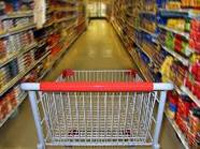 As an aside, analysts expect Amazon to soon be the largest apparel retailer in the US, and achieve a huge 16.2% share of all apparel sales, not just on-line, by 2021. I spoke with a consultant from a prominent firm this week who said he had recently visited two large grocery chains, each of which is scared to death of what Amazon might achieve in that sector, especially after the Whole Foods acquisition. As an aside, analysts expect Amazon to soon be the largest apparel retailer in the US, and achieve a huge 16.2% share of all apparel sales, not just on-line, by 2021. I spoke with a consultant from a prominent firm this week who said he had recently visited two large grocery chains, each of which is scared to death of what Amazon might achieve in that sector, especially after the Whole Foods acquisition.
Let's also look at athletic gear giant Nike. It is moving much of its production from Asia to Latin America and maybe to within the US itself, recognizing its need to be much more responsive to demand. One might say "about time," as Nike, like many other apparel companies, has been operating still with like six month lead times from Asian sources. Are you kidding me here in almost 2018? Nike now hopes to get that down to one month and in some cases as little as 10 days.
That is of course to the good - true supply chain progress. But the Nike transformation goes deeper than that, with other important implications. It plans to grow on-line sales from 15% of the total today to 30% in five years - so much for consumer goods companies not wanting to upset retailers by going consumer direct.
What's more, Nike said it is going to significantly reduce the number of retailers it focuses on, down to only about 40 worldwide, including on-line channel partners such as Amazon and Instagram. That will likely send shockwaves through other retailers that don't make the short list.
While Nike said it wouldn't necessarily eliminate the thousands of other retail accounts that it currently manages, they will receive little attention, while brand president Trevor Edwards said "undifferentiated, mediocre retail won't survive."
Retailers have some woes for sure, but they have some company on the consumer goods manufacturing side. Put it simply, traditional consumer packaged goods companies, especially but not only in food, are in trouble. There is simply no growth or worse, as consumer habits, especially among millennials, have simply changed.
Companies such as Campbell's Soup, Kellogg's and General Mills (where for example, revenues have fallen for seven straight quarters through Q2) are simply struggling, as the "center store" rapidly loses favor with consumers.
Usually mighty Procter & Gamble, despite getting rid of most of its food business, is facing similar growth issues, and just barely fended off a move by an activist investor to get on its board, someone who has talked about breaking one of the greatest companies in the world into three.
That's all because the consumer goods and retail environment has forever changed. So what happens in such a CPG world? Serious cost cutting, much of it in the supply chain, and mergers and acquisitions as a way to reduce enough costs to keep profits growing for a while before that strategy stalls too.
So we wind up with KraftHeinz, which in turn tried to acquire giant Unilever but was rebuffed. That led some analysts to tell Unilever it needed to buy Colgate Palmolive to stay competitive. All are vulnerable.
I don't have room here to talk about the growth of private label, which adds to CPG woes.
What the consumer goods to retail business landscape - and hence its supporting supply chains - look like 10 years from now is anyone guess. But there is zero doubt it will be much different than the paradigms we have studied and lauded for decades - and that the names in mix will have changed dramatically
What do you see happening to the consumer goods to retail supply chain? How huge will the changes ultimately be? Will many well known companies not make it? Let us know your thoughts at the Feedback button below.
|

|
 |
|
| |
|
|
New November Videocast: |
The Modern Control Tower: Orchestrating Your Digital Supply Chain
|
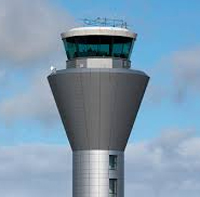
|
What is a Supply Chain Control Tower and What Does It Do?
These experts will discuss how operational control towers have evolved past their visibility and transportation roots to focus on taking action for every end-to-end customer order across the multi-party supply chain.
Featuring Dan Gilmore, President & Editor-in-Chief of Supply Chain Digest plus Martin Verwijmeren and Brian Hodgson of MP Objects.
|
 |
| Wednesday November 8, 2017 |
|
November Videocast: |
Supply Chain Optimization Series Part 2: Planning by Design - a Breakthrough New Approach to Supply Chain Planning
|
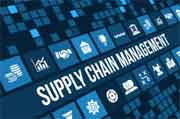 |
A New Apps-Based Approach to Planning is Changing to Traditional Paradigm, Enabling Better, More Rapid Decision-Making
Discover the challenges organizations face with their existing planning solutions and how an apps-based approach is allowing business to rapidly build solutions molded to their business processes that complement their existing planning software.
Featuring SCDigest's editor Dan Gilmore and Director of Product Management for LLamasoft, Jim Wilson.
|
 |
Wednesday November 8, 2017 |
|
November Videocast: |
Reallocating Resources to What Really Matters: Order Management's Impact on Supply Chain Excellence |
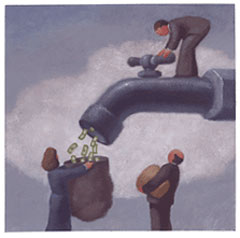
|
Using Cloud-Based Technology to Create Visibility, and Eliminate Inefficiencies and Errors in the Order-to-Cash Process
Discover how, working in harmony with your ERP system, an O2C automation solution that leverages machine learning addresses the root causes of inefficiencies.
Featuring SCDigest's editor Dan Gilmore and Esker's Sarah Joiner.
|
 |
| Tuesday November 7, 2017 |
|
|

Definitely the stuff of Ebocloud.
There will always be fringe interest in anything, but widespread adoption of implanted chips will meet extreme resistance. The article touches upon the Big Brother concern, which is top-of-mind whenever "
implanted chips"
are discussed.
Although there are some security/convenience benefits and although recent data breaches are the poster child for more security, there is no true advantage for retailers to be considering these measures. Retail has about a thousand things to get right before this could ever make sense and at $10-12/hour pay, retail associates are very unlikely to see the benefit of having their bodies invaded for their employer.
Ken Lonyai
Consultant, Strategist, Tech Innovator, UX Evangelist


Why would the transhumanism movement gain traction when the same goals can be met without surgically implanting chips? I expect the smartphone or watch will be used to automate these same tasks for a decade or more before implants gain even a little toehold.
Ron Margulis
Managing Director
RAM Communications


The difference between this and 1984 is that this assumes people will volunteer to have their privacy invaded at a heretofore unseen level. I agree with Mark; I cannot imagine why anyone would want this type of privacy invasion. Have we become so that lazy that we don't want to push a button to open our garage door or hit a switch to turn on our computers?
I am sure there will be those that think this is a great idea, that is, until the first hack or until stories come out about how security was thwarted by someone removing a chip from a person's hand (or worse) to enter a building or restricted area.
Steve Montgomery
President
b2b Solutions, LLC

|



![]()

![]()

![]()

![]()



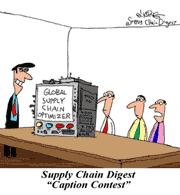



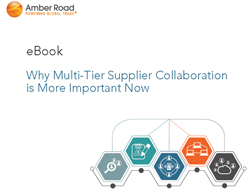
 As an aside, analysts expect Amazon to soon be the largest apparel retailer in the US, and achieve a huge 16.2% share of all apparel sales, not just on-line, by 2021. I spoke with a consultant from a prominent firm this week who said he had recently visited two large grocery chains, each of which is scared to death of what Amazon might achieve in that sector, especially after the Whole Foods acquisition.
As an aside, analysts expect Amazon to soon be the largest apparel retailer in the US, and achieve a huge 16.2% share of all apparel sales, not just on-line, by 2021. I spoke with a consultant from a prominent firm this week who said he had recently visited two large grocery chains, each of which is scared to death of what Amazon might achieve in that sector, especially after the Whole Foods acquisition.

